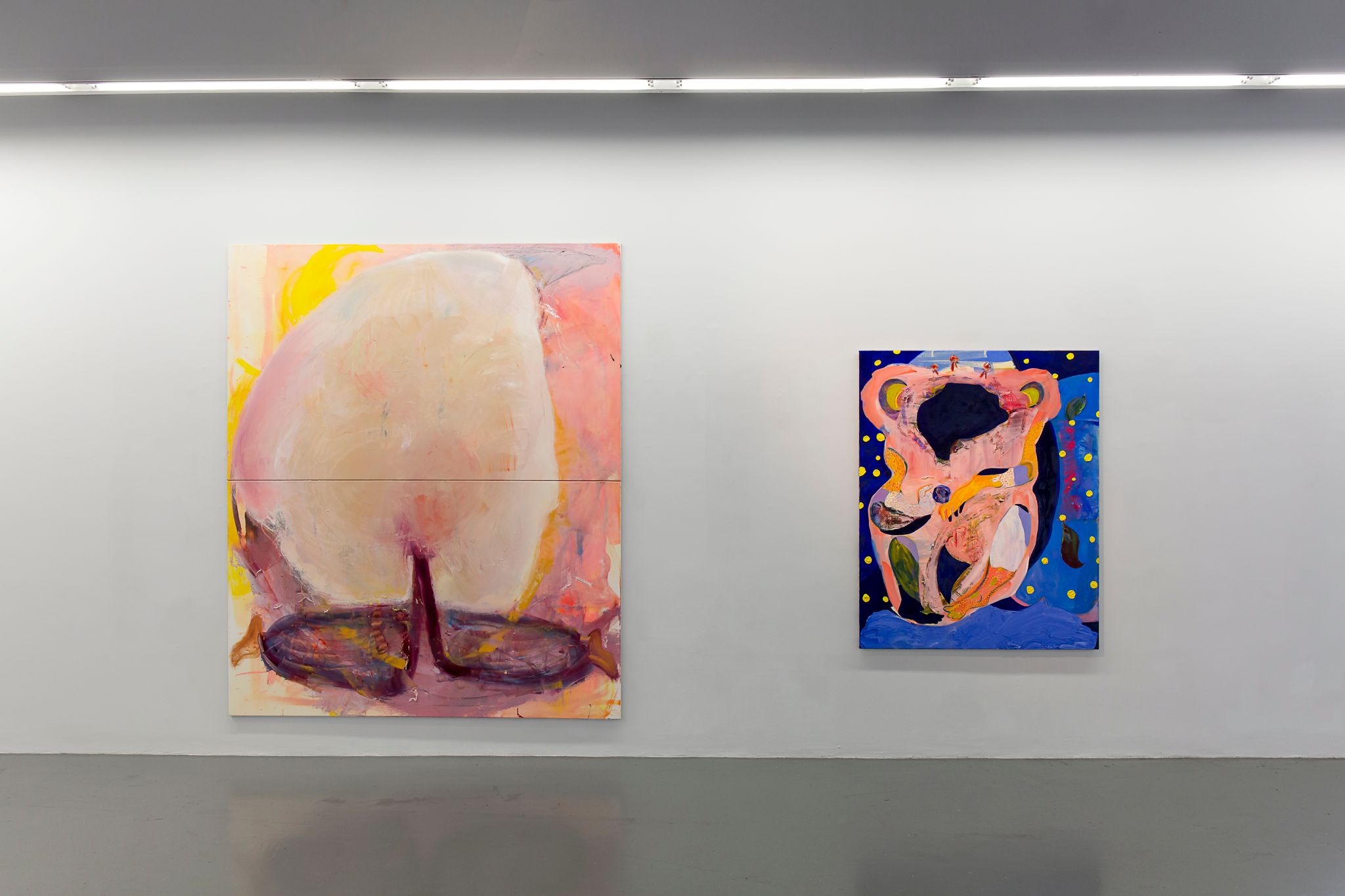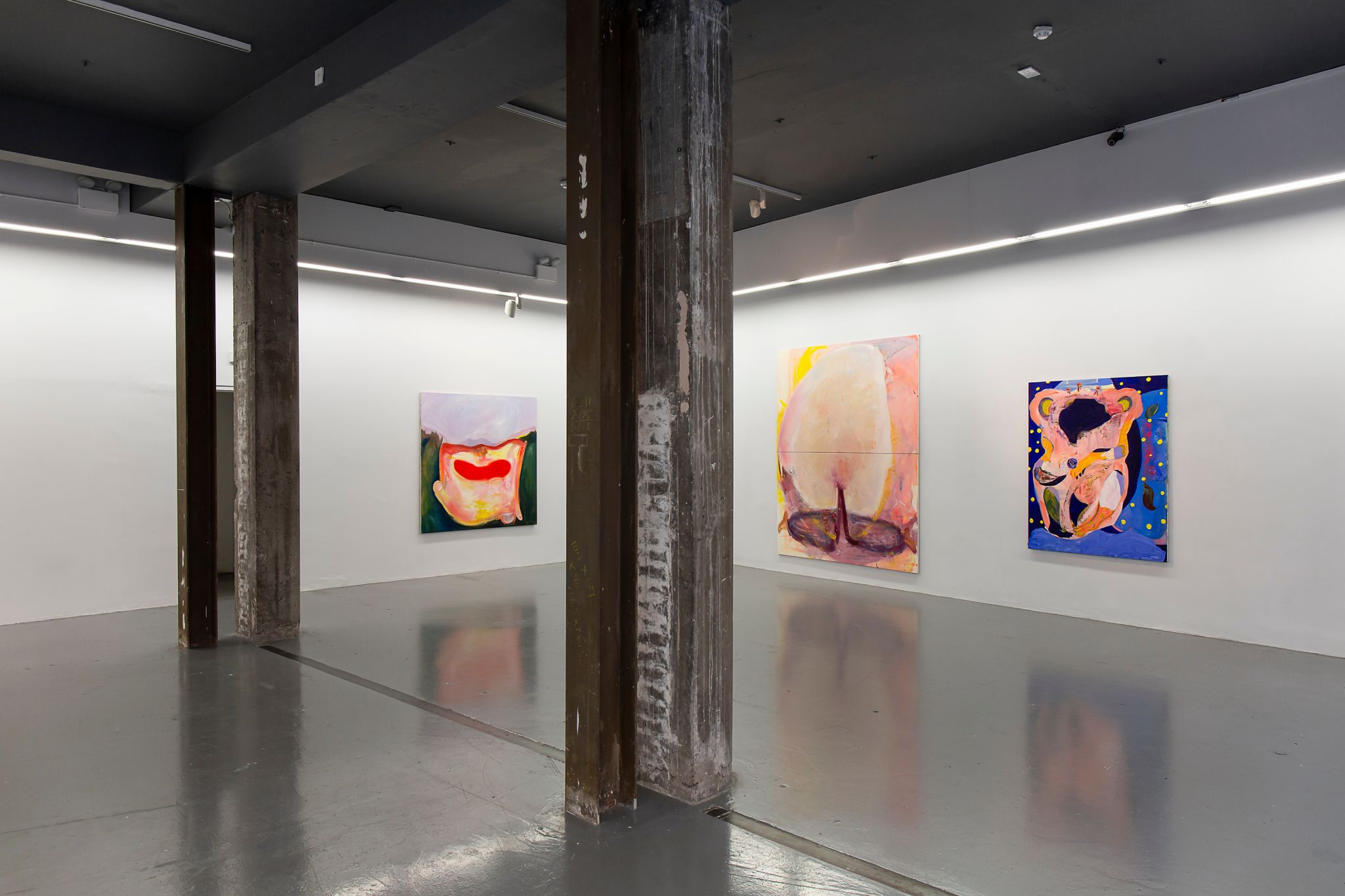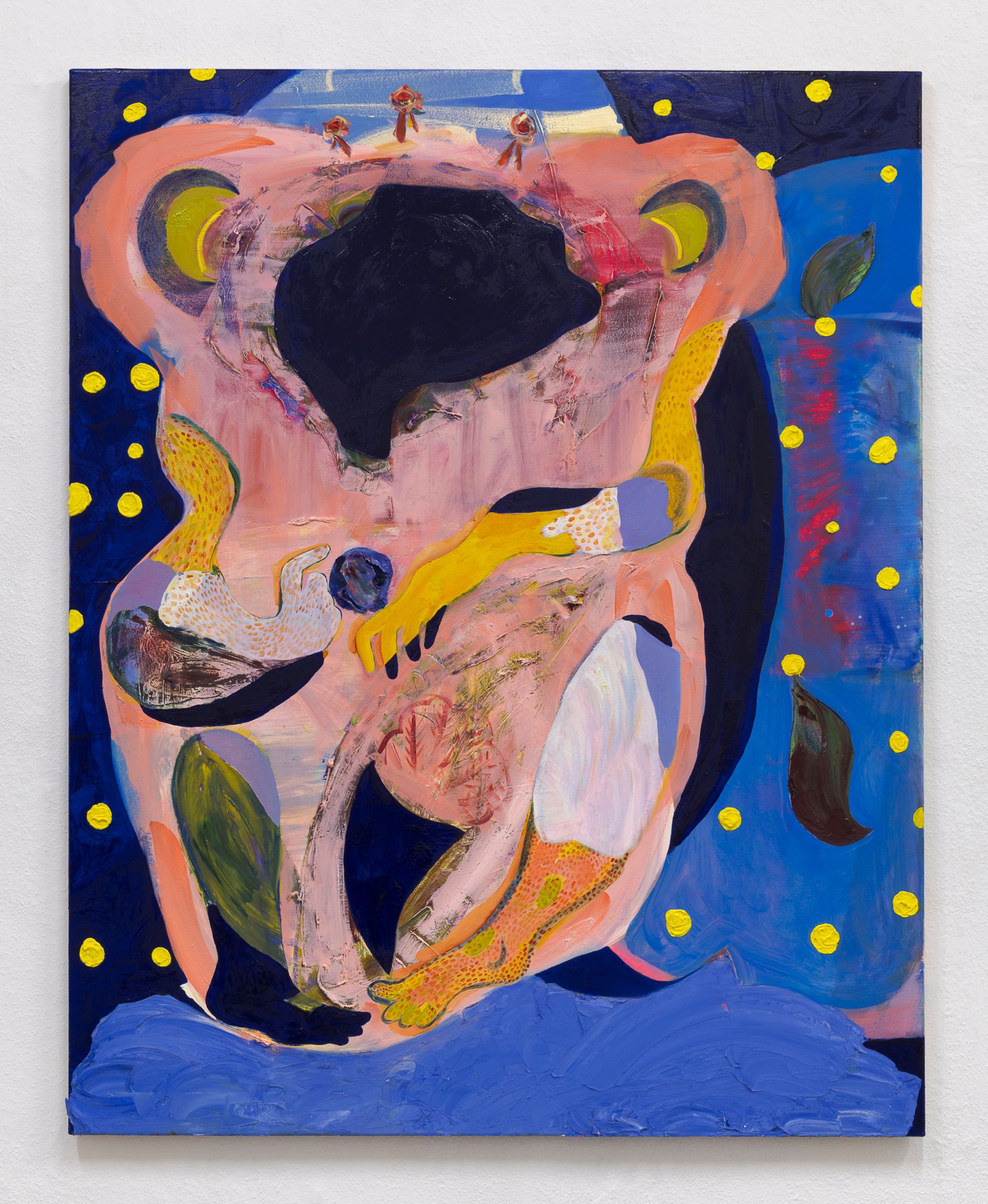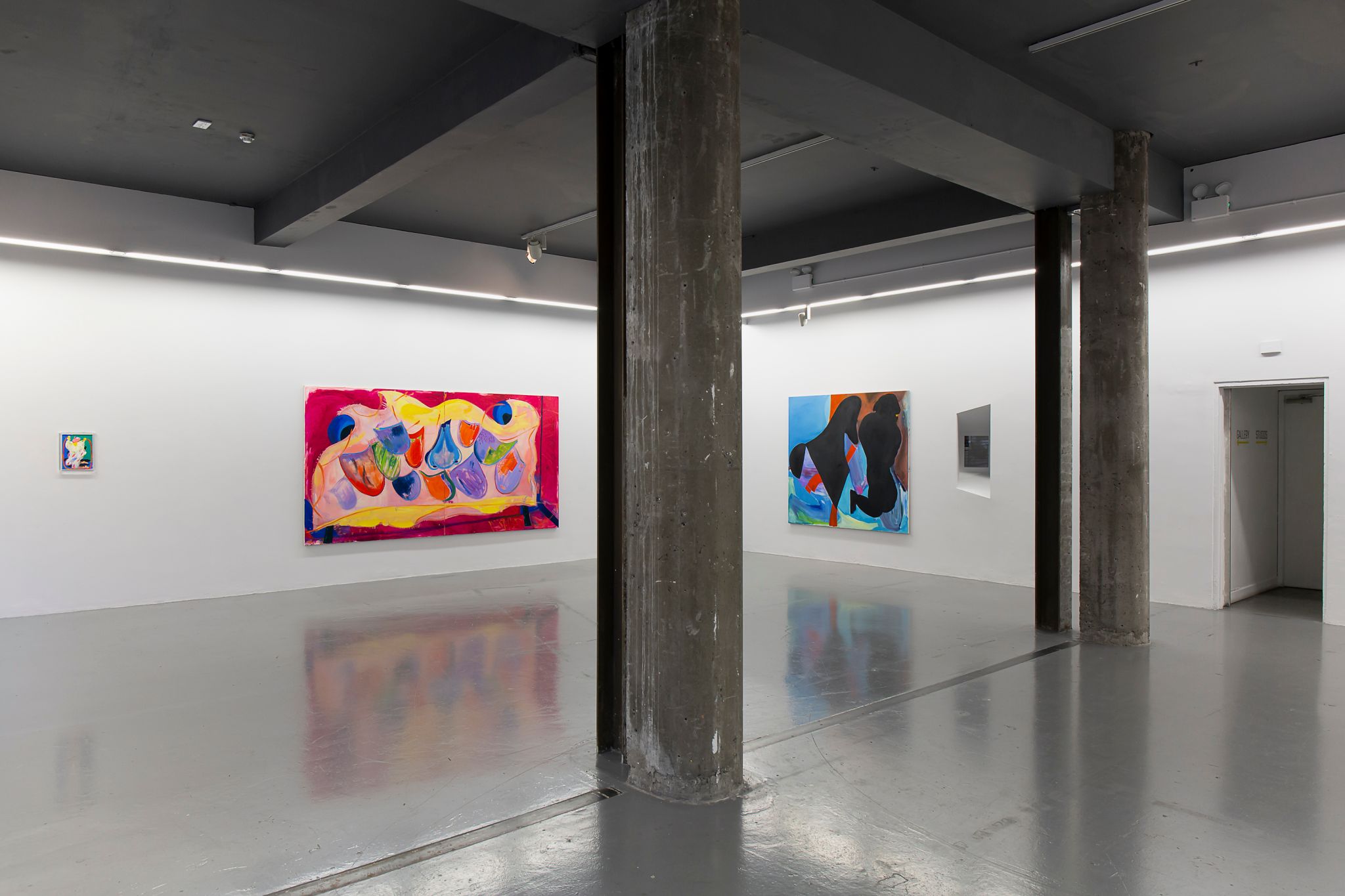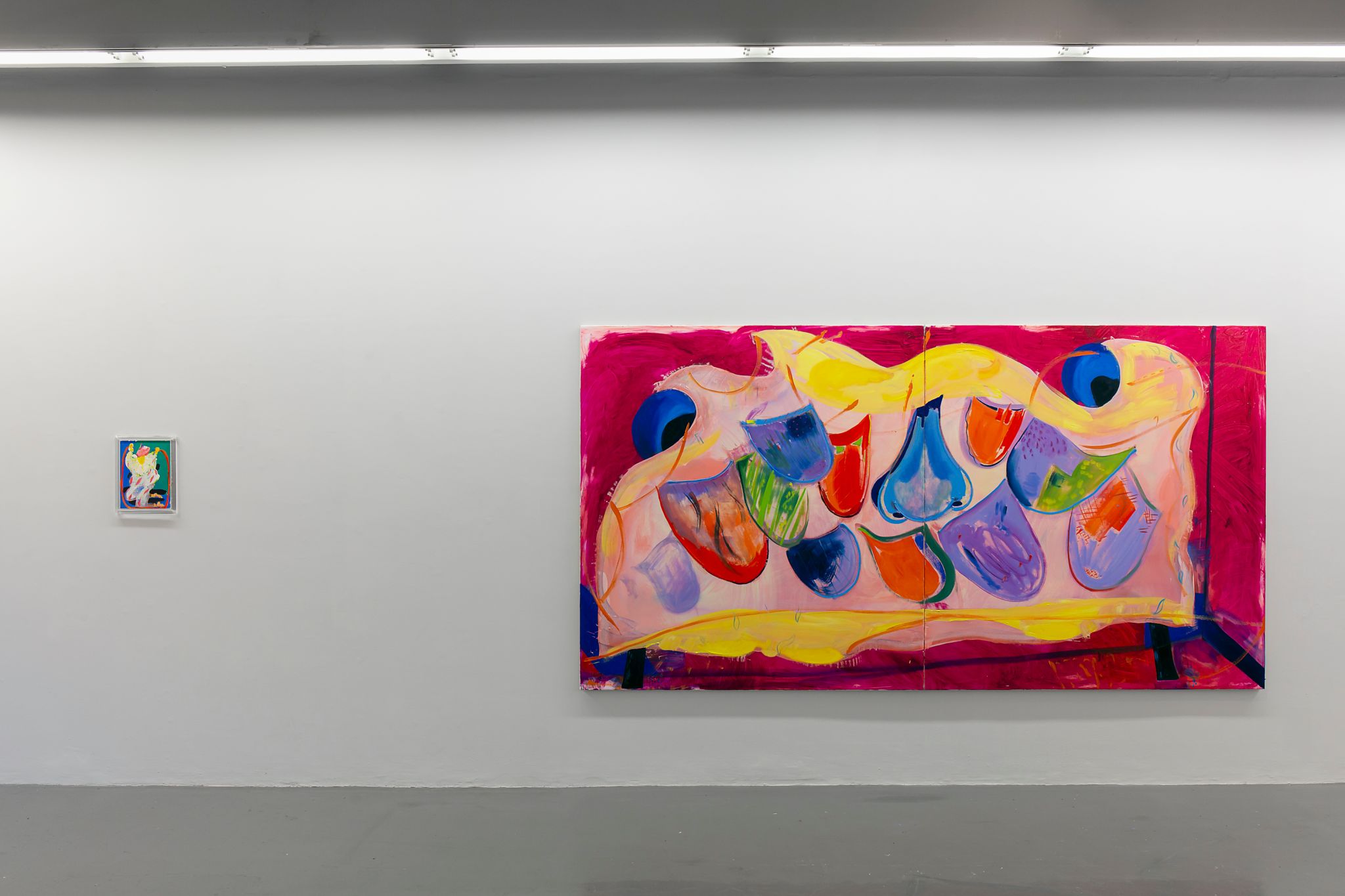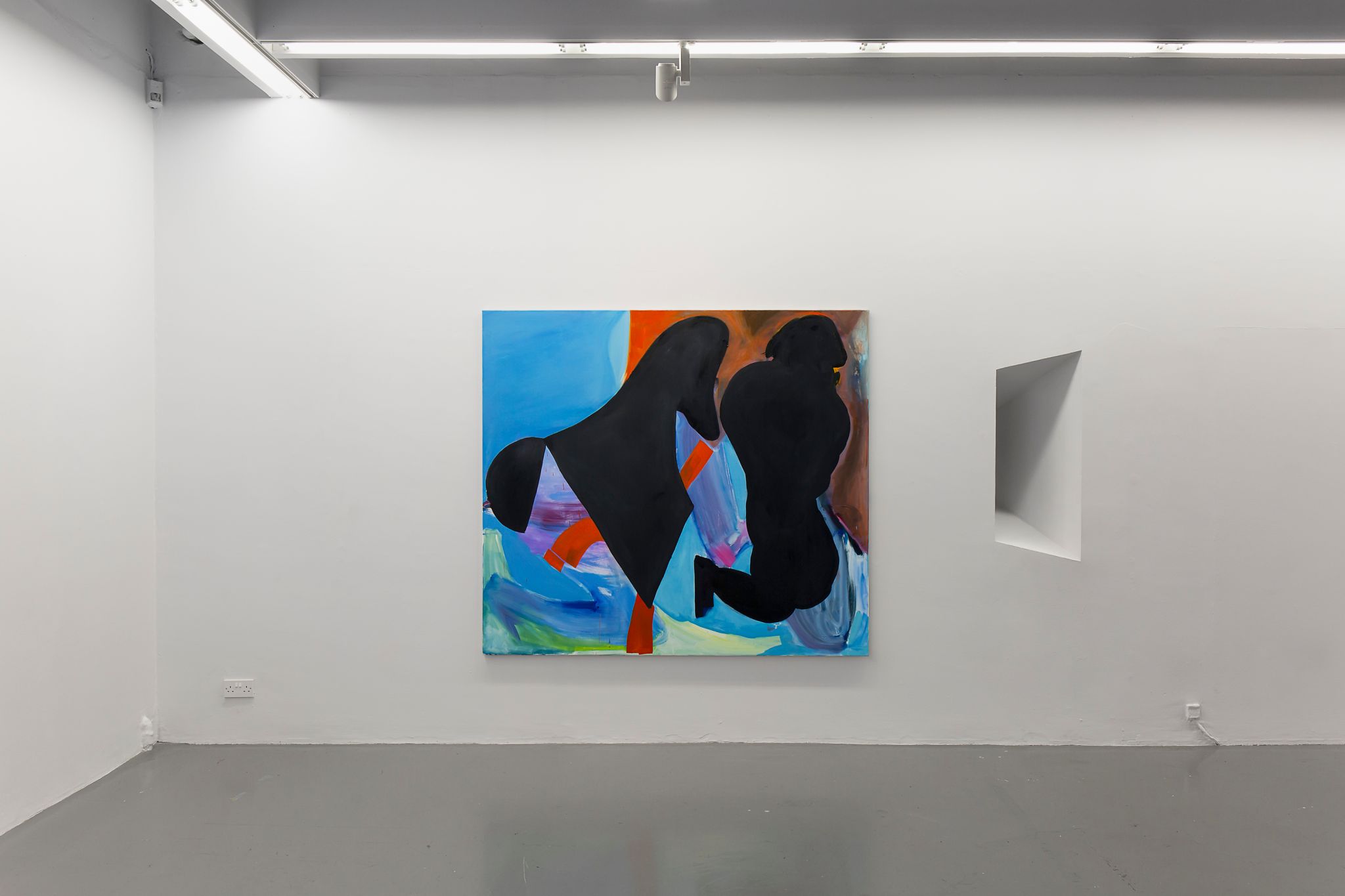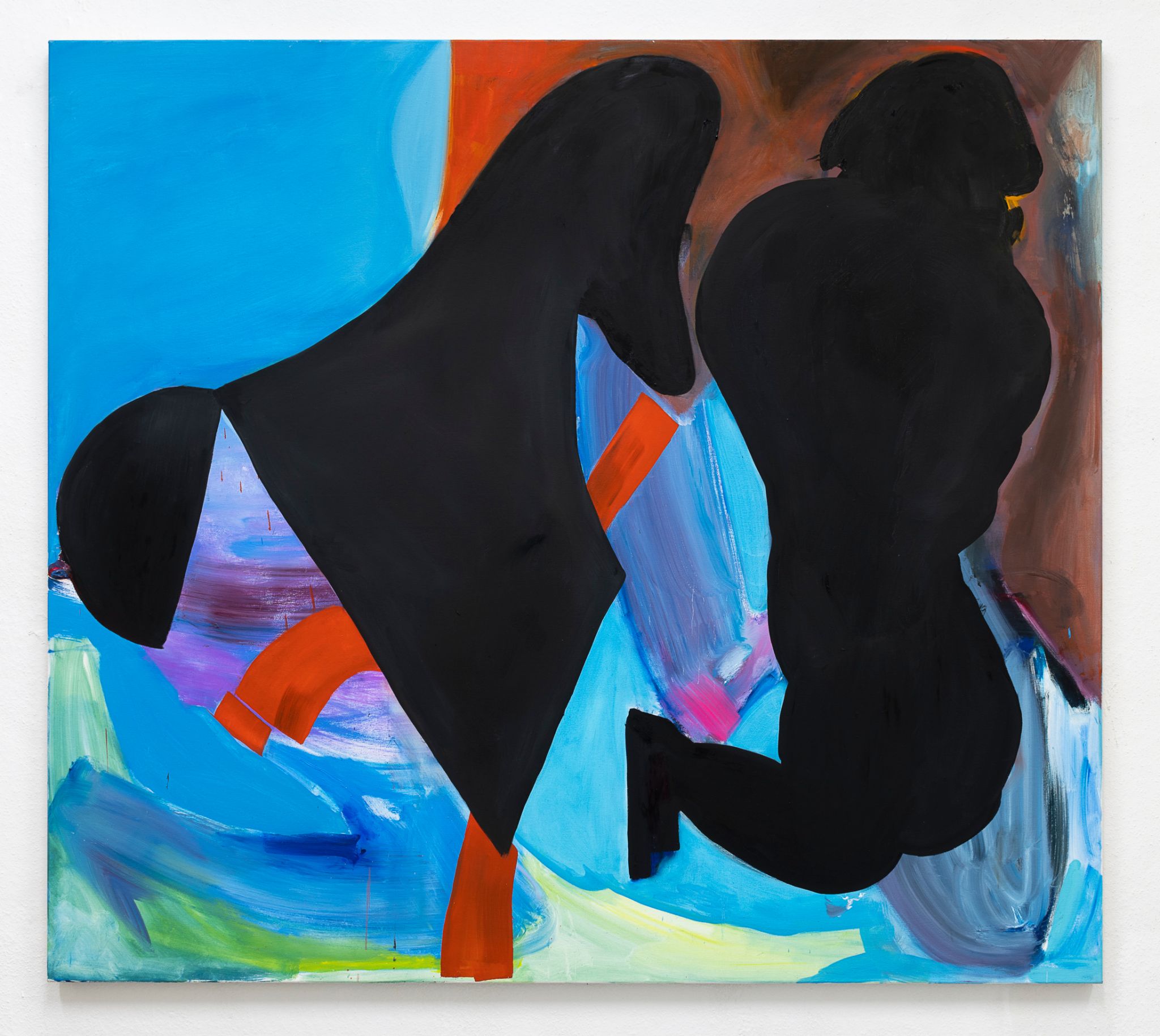Aileen Murphy’s new group of paintings respond to a series of fundamental questions posed by the artist to herself: Among others, How can a painting remain open and yet still hold together? What is elastic space? How can painting complicate its own space, or abstract the figure? In her studio, Murphy states that each work also asks a different question, and each possesses a different voice. Fellow painter and friend, Julia Dubsky, describes Aileen Murphy’s paintings as ‘recalcitrant’. Deriving from the verb ‘to kick back’, this description conveys much of the physical energy and formal qualities of Murphy’s practice. The less literal meaning, disobedience, gestures to the artist’s emotional or psychological attitude to her work. Dubsky writes: “I sense particular recalcitrance in [her] painting in the contrast between the sweetness of [her] subjects, candy colours, forthcoming and plentiful qualities — and [her] paint handling that I find, at times, disgusting, bratty, horny. It’s unreasonable!!”(1). Murphy bucks style and taste in a manner that draws out deeply human physical or emotional sensations such as laughing, crying, kissing, licking. When felt intensely, these are uncontrollable actions, and Murphy amplifies their physicality, sound and texture through a vivid palette and defiant gestural mark-making.
read more
In the age of mass media, artworks must emphasise, exaggerate, abstract, or extrapolate their meaning, or intended affect, in order to claim an individual identity under circumstances where the viewer’s attention is compromised. Manuela Ammer describes how the paintings of Elizabeth Murray fight against this onslaught of ‘affecting’ imagery we encounter continuously outside of the art gallery and how, as a result, Murray’s paintings are “immoderate and behave inappropriately. They take up too much space, are too loud, too garish, and seem unsure of the viewers’ presence or rather their capacity for empathy”(2). Aileen Murphy’s paintings share some of these assertive qualities, and also successfully invite viewers to empathise with the figures she depicts. If shown as figures at all, the bodily parts or fleshy forms, have a soft, fluid, malleable density, open to adaptation and change. Many of the figures are depicted crouching, squatting or kneeling, and with exposed wounds or openings in the flesh. Images of babies appear too, but so do other more unspecific/shapeless forms, like potatoes, pebbles, clouds, and eggs, and Murphy is happy for these to be interchangeable (for example a bear can just as easily be read as a burrito, or an ancient Egyptian canopic urn).
Murphy’s painting, Ursula (2019), depicts a large central figure rotating a sphere or globe in its paws or hands. Sharing a name with speculative science-fiction writer, Ursula K. Le Guin, and also the constellations Ursa Major (the Great Bear) and Ursa Minor (the Little Bear), the forming or rolling of this globe could relate to the universal quest of balance and equilibrium in Le Guin’s writing, which conceals themes of equality, feminism and anthropological observation within otherworldly utopian sci-fi settings. The forming or moulding of a globe in this painting also recalls the descriptions of bears in medieval bestiaries. These illustrated manuscripts offer allegorical (and unintentionally absurd) descriptions of real and mythical beasts, portraying them with human characteristics in order to instruct virtuous behaviour from their readers. The bear is most frequently described as giving birth to formless lumps of flesh, which the mother shapes into cubs by licking them: “the bear bringeth forth a piece of flesh imperfect and evil shapen, and the mother licketh the lump, and shapeth the members with licking.... For the whelp is a piece of flesh little more than a mouse, having neither eyes nor ears”(3). Such are the forms and shapes in Murphy’s paintings, at times vulnerable, lumpen and awkward, they are shaped on the canvas, given weight, character, presence, and life.
Settings and landscapes are recent inclusions in Murphy’s paintings. Previously, her figures/forms have appeared to float within a void on the canvas but here, in this grouping of new works, the figures are rooted in a range of locations including what could be a cosmic nebula, a red-walled bedroom or a sandy shoreline. In What colour are your eyes in the morning? (2019), the ‘softness’ of the climate is perceptibly Irish, and the form residing on the land, or perhaps within or beneath it, recalls mummified bog-bodies: squashed, deformed, pressed flat, and indistinct but with human attributes/appendages and an open wound or uterine form. The potential for a range of personal narratives has opened with Murphy’s newly articulated relationship between figure and ground. Even at their most surreal, her forms are not gruesome; but instead express out of body experiences, intangible bodily sensations, or lucid dreaming.
Murphy’s figures melt into many amorphous shapes, implying a combination of bodies and duality of form, both corporeal and spiritual. As her paintings bounce between abstraction and figuration, the presence of bodies, and the artist’s own body is omnipresent. Fusing swoops of gestural brushwork with finger-painted details, Murphy’s transformative physical interaction with paint also alters our emotional perception through what is made visible, and she describes this close-quarters process as a ‘scuffle’. Murphy’s instinctive actions and feelings, especially those that are vague or irrational, lead to decisions about form, composition, colour, and subject at each stage she makes her artwork. Paintings allow for contradictions to coexist in the same place and Murphy’s methodology embraces conflicting sensibilities of disobedience and care. Allowing for alternating individual responses based on mood and situation, her playful approach to decision-making is in keeping with Francis Picabia’s jolly aphorism, “Our heads are round so our thoughts can change direction”(4). Paintings that may, at first, appear spontaneous or whimsical are often constituted from a sequence of assertive and controlled conclusions, and a wealth of knowledge, that results in the vast spectrum of idiosyncratic aesthetic attributes that characterise Aileen Murphy’s practice.
1) Artist Julia Dubsky in email conversation with Aileen Murphy, September 2019
2) Manuela Ammer, “How’s My Painting?” (Judge Me, Please, Don’t Judge Me)”, Painting 2.0: Expression in the Information Age, Gesture and Spectacle, Eccentric Figuration, Social Networks, Prestel, 2015)
3) www.bestiary.ca is a comprehensive resource for information and images from medieval bestiaries
4) “Notre tete est ronde pour permettre a la pensee de changer de direction”, excerpted from Francis Picabia, La Pomme de pins (Saint-Raphael, 1922)
Text: Michael Hill
Photos: Temple Bar Gallery, Dublin
Images: Courtesy of the artist and Temple Bar Gallery, Dublin
